#laguna pueblo
Explore tagged Tumblr posts
Text

Loti, Laguna Pueblo, New Mexico
Photographer: Karl Moon Date: 1907 Negative Number: 146660B
519 notes
·
View notes
Text
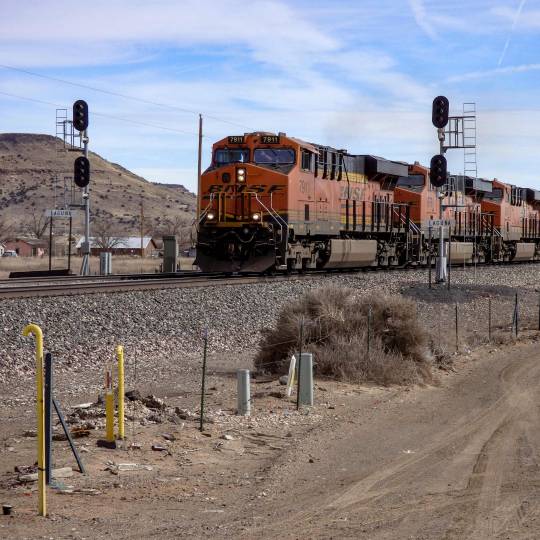


Driving through Laguna Pueblo. There is always a train going through Laguna. Those east-west tracks stay busy.
#New Mexico#Laguna Pueblo#NewMexico#trains#railroad#offthebeatenpath#Route66#roadtrip#daytrip#landscape#scenic#divinedesert#highdesert#nature#Native American#Puebloan
26 notes
·
View notes
Text

Kawaika (Laguna Pueblo), Cibola Co, NM: Home of Interior Secretary Deb Haaland. Photo: Angelo Angelo (July 26, 2023)
[Robert Scott Horton]
* * * *
“If to do were as easy as to know what were good to do, chapels had been churches, and poor men’s cottages princes’ palaces. It is a good divine that follows his own instructions:I can easier teach twenty what were good to be done, than be one of the twenty to follow mine own teaching.”
― William Shakespeare, The Merchant of Venice
#Laguna Pueblo#New Mexico#Angelo angelo#Robert Scott Horton#William Shakespeare#The Merchant of Venice#quotes
7 notes
·
View notes
Text
"What Sterling knew about the Great Depression of 1929 he had learned from his detective and crime magazines. The government boarding-school history teachers had seldom ever got them past the American Civil War. Sterling had been a boy during the Depression, but it had made little or no impression on people at Laguna. Most, especially the old-timers, had said they never even knew a depression was going on, because in those days people had no money in banks to lose. Indians had never held legal title to any Indian reservation land, so there had never been property to mortgage. But winters those years had been mild and wet for the Southwest. Harvests had been plentiful, and the game had been fat for the winter. The Laguna people had heard something about “The Crash.” But they remembered “The Crash” as a year of bounty and plenty for the people." -Leslie Marmon Silko
4 notes
·
View notes
Text

Diana Matar
1 note
·
View note
Text
As much as I enjoyed seeing Laura in Deadpool & Wolverine, one thing has been bothering me since opening night, and I can’t shake it:
Why did Marvel design her a shirt that says “Savage”?
It’s a fictional band t-shirt. I spent hours reverse image searching and browsing album covers and tour posters of bands with related names, album titles, and song titles, and while it’s clearly inspired by real rock bands and tours, it was nevertheless made up. They actively chose to make up a shirt with a derogatory racial term for a group Laura and the actress who plays her is not a part of for her to wear. Someone was paid by Marvel to design it. Why?
Now companies are selling copies of the shirt, so more people will be out in the world wearing a shirt with a term that, whether you want to call it a slur or just a “derogatory racial term,” has a dark, violent history and makes many Native Americans uncomfortable. It is a word that was used to justify cultural genocide within my parent’s lifetime, that has been used as a justification for racist discrimination and hatred within our lifetimes, not just Logan’s lifetime.
Logan had band logos, too. They used Awaken the Dreamers by All Shall Perish. The title track is about fighting for human rights and ending oppression, the design features the Statue of Liberty holding a gun, not a torch, surrounded by the silhouettes of swarming military planes. Now in Deadpool & Wolverine, we’re casually using the word savage, sticking it on a “feral” character with a reputation for violence. It could be powerful if Laura were Native. She escaped from a government run institution systematically abusing and dehumanizing children based on their heritage. Logan cast primarily people of color to play the X23 children. Gabriela Lopez died at the Liberty Motel and Logan died at what was described at “the last stop on the mutant underground to Canada”. They utilized the mutant metaphor very deliberately, and I feel that Deadpool & Wolverine’s choice of costuming for Laura did that a disservice.
(Yes, I’m aware of Savage Wolverine. Its potential as an Easter egg for a racist comic book title doesn’t make it not racist)
#Deadpool and Wolverine#Deadpool 3#racist language#anti native racism#Marvel#Deadpool & Wolverine#The first part of Logan was filmed right across the street from the Santa Ana rez and bordered to the north by the Zia Pueblo#The cast stayed at the Tamaya Resort on the Pueblo while filming there.#The gas station scene was the Laguna 66 Pit Stop on the Laguna Pueblo.#Eden was less than 4 miles from the Poshuoinge Pueblo ruins.#Chama - where the final scene was filmed - is situated between the Jicarilla Apache Nation and Taos Pueblo.#I’m not Native. I’m local enough though that when I watch Logan I see Indian Country.#I think that made it all the more jarring to me to see ‘savage’ in D&W.#(Not being reclaimed or subverted but casually on a white actress)#idk... I know it doesn't bother everyone & like I said I'm not Native. but as a white woman who's heard that word weaponized#(& a diehard fan of Laura for the last 20 years so believe me I’m not looking for something to be mad about)#i don’t think the mutant metaphor is enough to make it okay for a white actress to wear that shirt#(first post in the morning pre-coffee no editing we die like fic authors with no betas)
9 notes
·
View notes
Text
LESLIE MARMON SILKO // WRITER
“She is an American writer. A woman of Laguna Pueblo descent, she is one of the key figures in the First Wave of what literary critic Kenneth Lincoln has called the Native American Renaissance. Silko was a debut recipient of the MacArthur Foundation Grant in 1981. the Native Writers' Circle of the Americas Lifetime Achievement Award in 1994 and the Robert Kirsch Award in 2020.”


6 notes
·
View notes
Text
#Campus América 2024#Universidad de La Laguna#patrimonio cultural#pueblos originarios#arte#Cátedra Cultural «Francisco Tomás y Valiente»#Facultad de Derecho
1 note
·
View note
Text
"Native Americans across Indian Country shared mixed emotions this week after President Biden apologized for the U.S. government’s role in running Native American boarding schools across the country.
During the 150-year practice, at more than 400 schools where the U.S. partnered with various religious institutions, Indigenous children were separated from their families and stripped of their language and customs in an effort to assimilate into white culture. There were also documented cases of abuse and death.
Secretary of the Interior Deb Haaland, who is a member of the Laguna Pueblo tribe and has been instrumental in bringing these issues to a wider audience through her Federal Indian Boarding School Initiative, applauded Biden’s move.
“I'm so grateful to [Biden] for acknowledging this terrible era of our nation's past,” Haaland, whose grandparents were taken to boarding schools, posted on X.
ederal Indian boarding schools have impacted every Indigenous person I know. These were places where children - including my grandparents - were traumatized. I'm so grateful to @POTUS for acknowledging this terrible era of our nation's past.
“I would never have guessed in a million years that something like this would happen,” she told the Associated Press.
At the Gila Crossing Community School near Phoenix, Biden celebrated Haaland’s historic role and apologized today for America’s “sin.”
“It’s an honor, a genuine honor … to right a wrong, to chart a new path,” he said. “I formally apologize as president of the United States of America for what we did. I formally apologize. It’s long overdue.”
However, Indigenous leaders and citizens across the country stressed that this is only the first step.
“This is one of the most historic days in the history of Indian Country, and an apology of this size must be followed by real action,” Nick Tilsen, who belongs to the Oglala Lakota Nation and is president and CEO of the Indigenous rights organization NDN Collective, told Yahoo News.
Tilsen believes that there are specific, actionable steps that need to accompany any apology. For him, that means passing the U.S. Truth and Healing Commission bill in Congress, rescinding medals of honor for those who participated in the Battle of Wounded Knee, releasing “longest living Indigenous political prisoner in American history Leonard Peltier, who is also a boarding school survivor” and “unprecedented investment in Indigenous languages and education.”
Principal Chief of the Cherokee Nation Chuck Hoskin celebrated the move, calling out Haaland’s role in particular, and echoed the sentiment of following any apology with action.
“The [Department of the Interior’s] recommendations, especially in the preservation of Native languages and the repatriation of ancestors and cultural items, can be a path toward true healing,” Hoskin said in a statement.
While many Indigenous leaders are calling for action, Tilsen stressed that this is also a time to hold boarding school survivors and their families close.
“At this moment in history, we have to remember many of the survivors of the boarding schools are still alive,” he said. “It's in every household and it's in every community. And it's directly tied to the struggles that our people have today.”
Dylan Rose Goodwill, who is Diné (Navajo), Hunkpapa Lakota and Sisseton Wahpeton Dakota, was visiting Sherman Indian High School in Riverside, Calif., on Thursday when she heard the news about Biden’s forthcoming apology. It’s a place that is part of her family history, as her grandmother (or másáni) was sent there when it served as a federally run Native boarding school.
She told Yahoo News that hearing the news there was “complicated.”
As the senior assistant director of undergraduate admissions at the University of Southern California, Goodwill was visiting the school as a college recruiter.
“I've always had these kinds of mixed feelings because it's been weird to be the admission counselor for the schools that my own grandparents attended,” she said.
“It was already a tough morning to go and then to receive the news on site was really a mixture of feelings because I felt anger mostly, where it was like disbelief that this was happening, excitement that at least it was happening, but also feeling like this isn't enough,” Goodwill added.
Sitting where her grandmother sat in the 1930s and '40s, Goodwill asked herself, “What is that gonna really hold for her now? She passed in '04.”
Biden’s statement comes 16 years after former Canadian Prime Minister Stephen Harper apologized for Canada’s role in the Indigenous residential school system — a topic filmmakers Julian Brave NoiseCat and Emily Kassie document in their film Sugarcane, about St. Joseph’s Mission School near the Sugarcane reserve in British Columbia.
NoiseCat is a member of the Canim Lake Band Tsq’escen and a descendant of the Lil’wat Nation of Mount Currie and whose grandmother attended the Catholic Church-run residential school and gave birth to his father there. He told Yahoo News that this moment was important for a “continentwide conversation about what happened to Native families and Native children at Native American boarding schools and Indian residential schools.”
Joining Biden and Haaland for the event on the Gila River Indian Reservation along with Kassie, NoiseCat continued, “The fact that the president has chosen to formally apologize to survivors and their families is a real testament to the significance of this story, which needs to be understood as a foundational story to North America.”
However, Kassie echoed that actionable steps must follow sentiment.
“As momentous and important as this day is, it's important that it's followed up with action,” she told Yahoo. “It's important that the records of what happened at these institutions that are held by the U.S. government and the Catholic Church are opened to Indigenous communities who are looking for answers. And it's important that those communities also have the opportunity to hold to account those institutions and individuals who abused them.”
For Tilsen, it’s also a time to “center the survivors.”
“As we sort of politically dissect this moment,” he said, “I also want to recognize the pain that is being resurfaced, and that our people deserve the right to have pain and they deserve the right to have rage in this moment while we lean towards moving forward in action.”
NoiseCat, who has a deeply personal connection to the residential school history, said, “I'm probably going to call my dad today after the apology and just check in with him.”
369 notes
·
View notes
Text

Back in 2021 I drew P’urhépecha Miku based on the garb from my grandmother’s pueblo, Santa Fe de la Laguna💖 by perisceris
162 notes
·
View notes
Text
10 Cool Jewish Women from Modern Day! Part 1
Raquel Montoya-Lewis, an American attorney and jurist on the Washington Supreme Court. Born to a father descended from the Pueblo of Laguna, she is a member of the Pueblo of Isleta. Her mother, born in Australia, is Jewish. She was also a professor at Fairhaven College, and was a judge for indigenous courts including the Upper Skagit Indian Tribe and the Nooksack Indian Tribe. She is the second Native American person to sit on a state supreme court, and the first enrolled tribal member!
Dana International, an Israeli pop singer. Born in Tel Aviv to a family of Yemenite descent, she identified as female from a very young age, and was inspired by Ofra Haza to become a singer. Dana was chosen to represent Israel in Eurovision 1998 with the song "Diva," and won the contest with 172 points. She represented Israel again in 2011.
Liora Itzhak, an Israeli singer from the Bene Israel Indian community. She moved to India at the age of 16, returning to Israel eight years later. While in India, she sang with Kumar Sanu and Udit Narayan, and performed in the Bollywood film Dil Ka Doctor. Her music has gained recognition in both Israel and India. During the Indian Prime Minister's visit to Israel in 2017, she sang the national anthems of Israel and India.
Carol Man, a Hong Kong artist born into a traditional Chinese family. She converted to Judaism, and often combines Jewish and Chinese elements into her work, which includes a step-by-step guide to Chinese-Hebrew calligraphy. Featured in the Jewish Renaissance magazine and the Jewish Art magazine, she often gives workshops on her style of art.
Qian Julie Wang, a Chinese American writer and civil rights lawyer. Her father was a professor of English and critic of the government, which led to her family having to flee China. She graduated from Swarthmore College with a BA in English Lit, and earned her JD from Yale Law. She converted to Judaism, and founded a Jews of Color group at Manhattan Central Synagogue.
Sarah Avraham, an Indian born Israeli Muay Thai kickboxer. She was born in Mumbai to a formerly Hindu father and a Christian mother. Her family was close friends with Gavriel and Rivka Holtzberg, who were killed in the 2008 Mumbai terrorist attacks. A year after the attack, her family converted to Judaism and moved to Israel. She volunteers as a firefighter, and is considering studying medicine. In 2012, she won the Israeli national women's Thai boxing championship in her weight class; in 2014, she won the Women's World Thai-Boxing Championship in Bangkok in her weight class.
Leza Lowitz, an American writer born in San Francisco who has written, edited, and co-translated over twenty books. She is an internationally renown yoga and mindfulness teacher. She has often written on the topic of expatriate women. She is married to a writer and translator, and has one son. Her work is archived in the Chicago U library's special collection of poetry from Japan.
Ellie Goldstein, a British model born in Ilford, Essez. She has been modeling since she was fifteen, and has worked on campaigns for Nike, Vodafone, and Superdrug. She is the first model with a disability (Down syndrome) to represent Gucci and model their beauty products.
Ashager Araro, an Ethiopian-Israeli activist. Born while her parents were traveling during Operation Solomon. She studied government, diplomacy, and strategy at the IDC Herzliya. She is a feminist who has spoken out about racism and police brutality. In early 2020, she opened a cultural center in Tel Aviv dedicated to Ethiopian Israel culture called Battae.
Sarah Aroeste, an American singer, composer, and author of Northern Macedonian descent. Her music often referred to as "feminist Ladino rock." Born in Princeton, her family emigrated to America from Monastir/Bitola during the Balkan Wars. In the late 1990s, she noted the lack of a revival for Sephardic music despite the revival of klezmer, and started her own Ladino rock band in 2001. One of her albums is named after Gracia Mendes Nasi. In 2015, she represented the US in the International Sephardic Music Festival in Cordoba. She has written several books, including children's books, with Sephardic themes. (Fun fact, I met her at the Greek Jewish Festival in New York!)
34 notes
·
View notes
Text
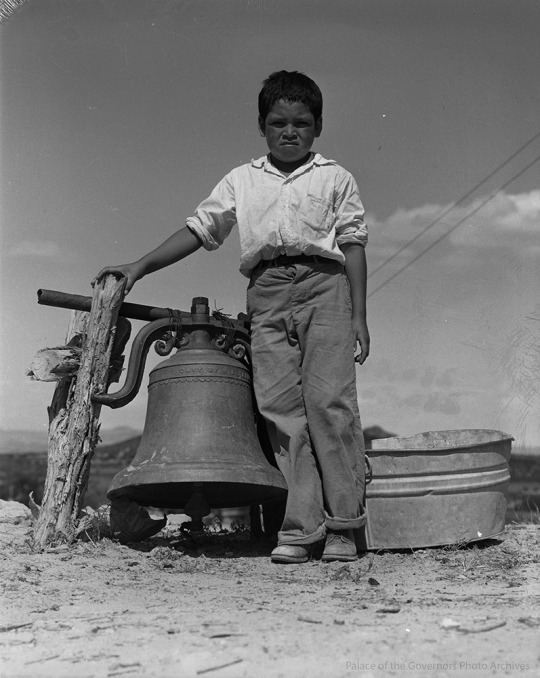
Boy standing beside an old bell, Laguna Pueblo, New Mexico
Photographer: Wyatt Davis
Date: 1941
Negative Number: HP.2007.20.37
New Mexico Magazine collection
144 notes
·
View notes
Text
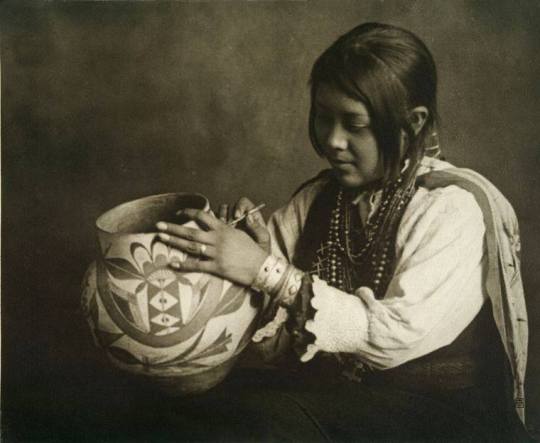



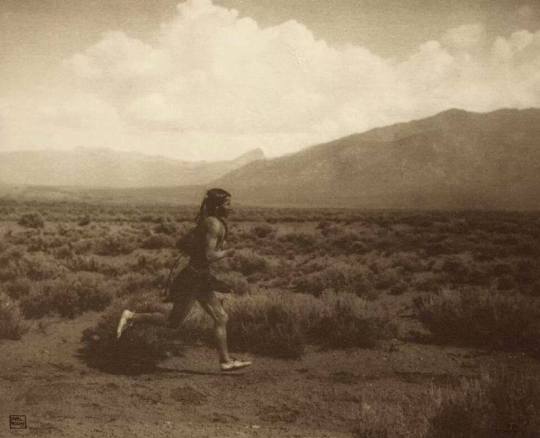


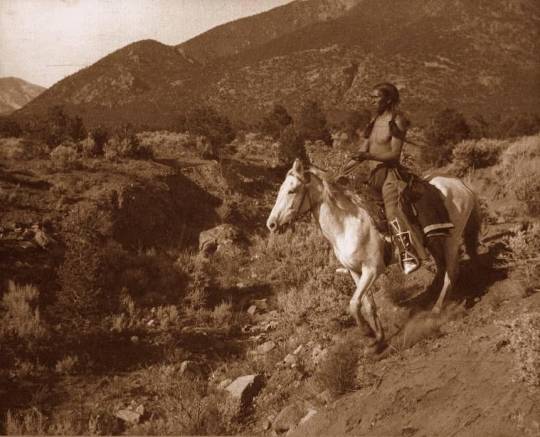




Carl E. Moon (American, 1878 – 1948) learned his craft as an apprentice to a photography studio. Subsequently he moved to Albuquerque, New Mexico, and opened his own studio, where he made pictorial studies of Indians that were living in the region.
In the early 1920's Moon established a studio in Pasadena, California, where he continued to photograph and paint. During the last three decades of this career, the Photographer produced works for Henry E. Huntington, published "Indians of the Southwest", and contributed illustrations for children's books written by his wife, Grace Purdie Moon.
The Pottery Maker, 1910
The Meeting Place, Taos: Border of New Mexico Near Colorado Line, 1908
Arrow Maker. Taos Pueblo, New Mexico. ca. 1904
The Flute Song, Taos Pueblo, New Mexico, 1900
A Taos Pueblo runner, 1914
Up the Acoma trail, Acoma Pueblo, New Mexico, ca. 1904
"The Black Jar", 1900
The Scout, Taos Mountains, New Mexico, 1904
Pedro Begay, Navajo, 1907
Hopi Mirror, Pool near Walpi, Arizona, 1900
Lotta Atsye, the chief’s daughter of the Laguna Pueblo, 1904
Haz-Pah, Navajo, 1914
132 notes
·
View notes
Text

"...there are no clocks to measure time but the beating of our singing hearts."
-Harold Littlebird-Santo Domingo/Laguna Pueblos
And then there's the time-stopping stillness of sacred moments, as when an eagle drops a feather and the pueblo elders bow their heads in prayer.
—Leila
[Leila L'Abate]
9 notes
·
View notes
Text




Nonfiction Picks: Native American Heritage Month
Celebrate Native American Heritage Month by checking out these nonfiction recommendations!
Whiskey Tender by Deborah Jackson Taffa
Deborah Jackson Taffa was raised to believe that some sacrifices were necessary to achieve a better life. Her grandparents - citizens of the Quechan Nation and Laguna Pueblo tribe - were sent to Indian boarding schools run by white missionaries, while her parents were encouraged to take part in governmental job training off the reservation. But as Taffa grew up, she began to question the promise handed down by American society: that if she gave up her culture, her land, and her traditions, she would be able to achieve the “American Dream.” This memoir traces how a mixed tribe native girl interprets her own identity.
By the Fire We Carry by Rebecca Nagle
In this volume, Rebecca Nagle recounts the generations-long fight for tribal land and sovereignty in eastern Oklahoma. This book not only stands as a landmark work of American history, but is also a powerful work of reportage that braids the story of the forced removal of Native Americans onto treaty lands in the nation’s earliest days, and a small-town murder in the 1990s that led to a Supreme Court ruling reaffirming Native rights to that land more than a century later.
Notable Native People by Adrienne Keene
Celebrate the lives, stories, and contributions of Indigenous artists, activists, scientists, athletes, and other changemakers in this illustrated collection. From luminaries of the past to contemporary figures, this volume highlights the vital impact Indigenous dreamers and leaders have made on the world. This collection also offers primers on important Indigenous issues, from the legacy of colonialism and cultural appropriation to land and water rights, and more.
A Mind Spread Out on the Ground by Alicia Elliott
The Mohawk phrase for depression can be roughly translated to "a mind spread out on the ground." In this urgent and visceral work, Alicia Elliott explores how apt a description that is for the ongoing effects of personal, intergenerational, and colonial traumas she and so many Native people have experienced. Elliott's deeply personal writing details a life spent between Indigenous and white communities, a divide reflected in her own family, and engages with such wide-ranging topics as race, parenthood, love, art, mental illness, poverty, sexual assault, gentrification, and representation.
#native american heritage month#native american history#nonfiction#reading recommendations#reading recs#book recommendations#book recs#library books#tbr#tbr list#to read#booklr#book tumblr#book blog#library blog#readers advisory
30 notes
·
View notes
Text
President Joe Biden is expected to formally apologize on Friday for the country’s role in the Indian boarding school system, which devastated the lives of generations of Indigenous children and their ancestors. “I would never have guessed in a million years that something like this would happen,” said Secretary of Interior Deb Haaland, a member of the Pueblo of Laguna. “It’s a big deal to me. I’m sure it will be a big deal to all of Indian Country.” Shortly after becoming the first Native American to lead the Interior, Haaland launched an investigation into the boarding school system, which found that at least 18,000 children, some as young as 4, were taken from their parents and forced to attend schools that sought to assimilate them, in an effort to dispossess their tribal nations of land. It also documented nearly 1,000 deaths and 74 gravesites associated with the more than 500 schools. No president has ever formally apologized for the forced removal of Native American, Alaska Native, and Native Hawaiian children — an element of genocide as defined by the United Nations — or any other aspect of the U.S. government’s decimation of Indigenous peoples.
28 notes
·
View notes